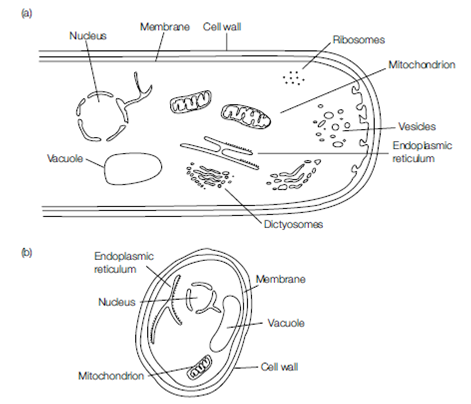Fungal structure
Fungi are filamentous, nonphotosynthetic eukaryotic microorganisms which have a heterotrophic nutrition. Their common cellular unit is described as a hypha. This is a tubular compartment that is surrounded by a rigid, chitin-containing wall. The hypha extends by tip growth and multiplies through branching, creating a fine network called a mycelium. Hyphae contain nuclei mitochondria ribosomes, Golgi and membrane-bound vesicles within a plasma membrane-bound cytoplas.
The subcellular structures are supported and organized by microtubules and endoplasmic reticulum (ER). The cytoplasmic contents of the hypha tend to be concentrated towards.the growing tip. Older parts of the hypha are heavily vacuolated and may be separated from the younger areas by cross walls called septae. Not all fungi are multicellular; some are unicellular and are termed yeasts. These grow by binary fission or budding.

Figure: (a) Hyphal and (b) yeast structures.